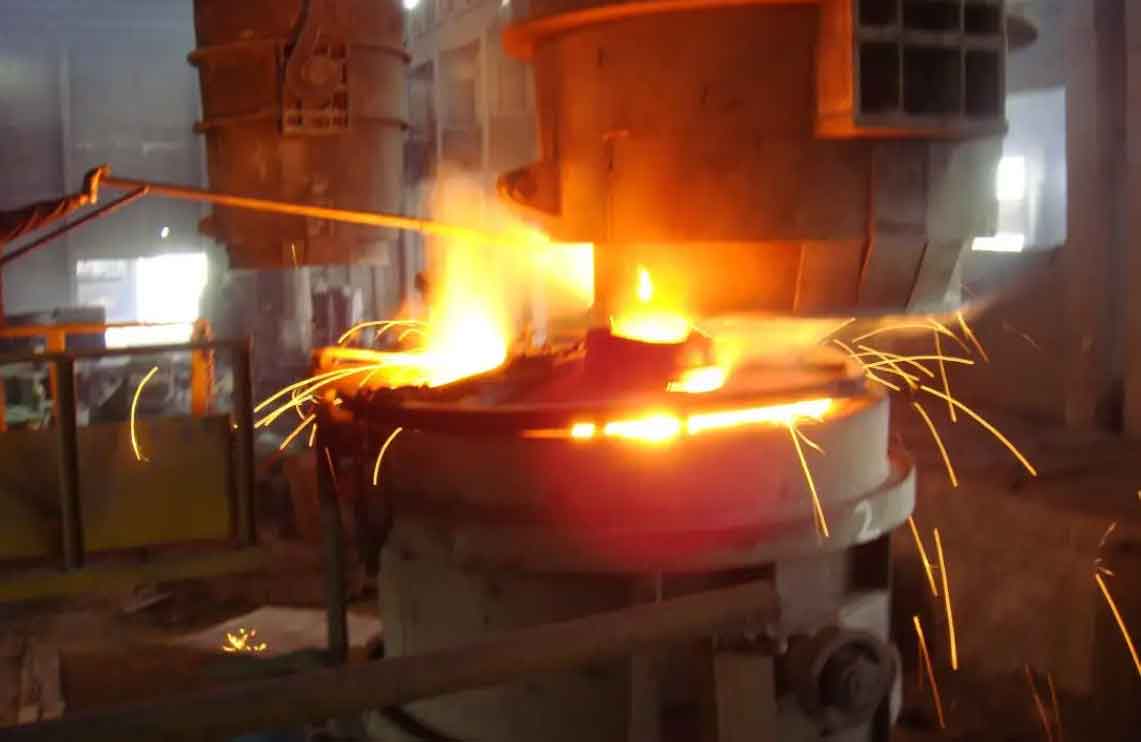The pouring process of sand casting is a very important link in the whole casting process. Usually, many foundries regard the pouring sequence as the key process. The pouring process design has a great influence on the quality of sand casting. There are many deficiencies in the original pouring process of motor housing, such as high pouring temperature, long pouring time, unspecified pouring height, and unspecified pouring speed, resulting in many casting defects such as product cracks, sand flushing, sand inclusion, insufficient pouring and so on. After analyzing and studying the original sand casting pouring process, the following optimization is made:
① Before sand casting, the chemical composition of liquid steel must meet the chemical composition requirements of motor shell.
② Molten steel sedation time ≥ 5 minutes.
③ The pouring temperature of sand casting is 1550 ℃ – 1565 ℃.
④ Pouring time of sand casting: (25 ~ 30) seconds / box.
⑤ The height of the ladle from the top surface of the gate cup shall be controlled within 200mm-300mm.
⑥ The diameter of casting brick is changed from ¢ 40 to ¢ 60.
⑦ Sand casting pouring shall follow the principle of slow fast slow. The package shall be slowly collected at the end of pouring, and cannot be turned off at once. After pouring, it shall be poured three times every 10 seconds. The first point pouring shall have a small flow and the time shall be extended appropriately.
⑧ Before pouring the seventh box of molten steel, pour the test bar. The total number of pouring boxes is 12. When the amount of molten steel is large, it shall not exceed 13 boxes, and the total net weight is 8.5t-9.2t.
⑨ When cold steel is stuck at the casting mouth, it must be handled in time.
⑩ If the molten steel weighing equipment fails during sand casting, the ladle operation must be carried out. The optimized casting process has appropriate casting temperature, which not only overcomes the disadvantage of large crack tendency caused by high-temperature casting, but also ensures that the liquid steel can fill the mold cavity within 25-30 seconds. Proper molten steel flow and head height ensure that the scouring force of molten steel on molding sand is small during casting, reducing the possibility of sand inclusion.

